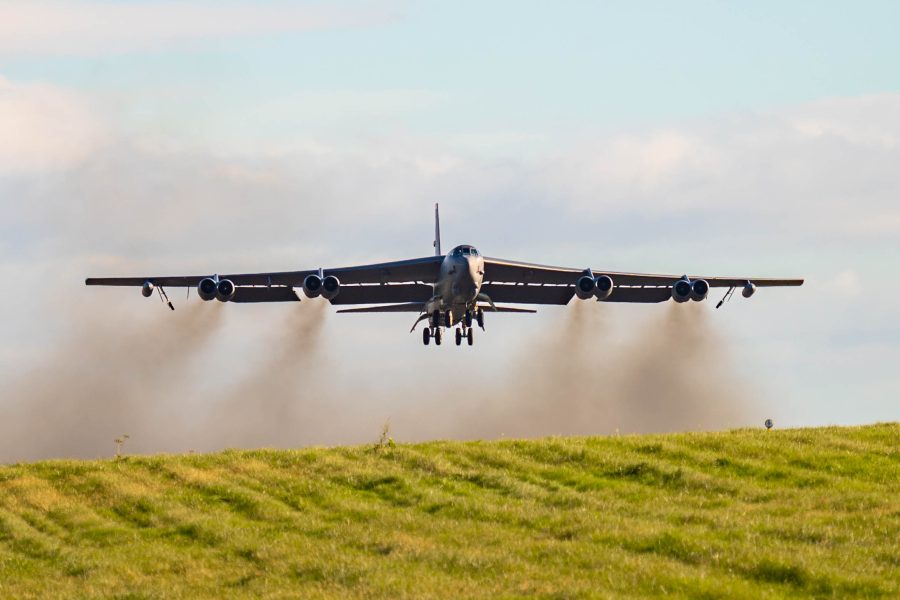U.S. Air Forces in Europe reported more mysterious small drones flying around a cluster of USAF bases in the United Kingdom and said for the first time that drones had been seen at RAF Fairford, 130 miles away, where four U.S. B-52 bombers are currently deployed as part of Bomber Task Force 25-1.
U.K. officials said that jets had scrambled in response and British troops are deploying to the bases, as well.
USAFE first reported the small drones operating around and over RAF Lakenheath, RAF Mildenhall, and RAF Feltwell on Nov. 25. Varying numbers of drones, in different sizes and configurations, were seen from Nov. 20-24. Who owns and operates the drones and what they are doing remains a mystery.
On Nov. 26, USAFE issued an update, reporting that “small unmanned aerial systems continue to be spotted.” The update included RAF Fairford among the bases experiencing incursions.
“None of the incursions impacted base residents, facilities, or assets,” the update asserted.
Parliament took up Air and Missile Defenses on Nov. 27, with MP Nick Timothy, who represents the area around Lakenheath and Mildenhall, saying “residents were concerned to hear aircraft being scrambled in the middle of the night to intercept them.”
Timothy’s comments confirm media reports that Lakenheath had scrambled fighters and highlighted the challenges commanders face when it comes to regulations about civilian safety.
USAFE has not indicated what kinds of defenses it is employing, but has stated “we retain the right to protect our installations.”
UK airspace is controlled by the a government agency, the Civilian Aviation Authority, much as U.S. airspace is the purview of the Federal Aviation Administration. Military operators must work within those civilian frameworks, severely limiting the options commanders have for defending against such incursions. Because bases are frequently close to densely populated areas, those options are further limited. Indeed, it can be difficult to maintain routine operating schedules in some cases, as residential development encroaches on military bases, let alone empowering them to take actions involving radio interference or, even less likely, kinetic weapons.
The BBC and Sky News reported Nov. 27 that roughly 60 British troops are deploying in response to the drones, including some with counter-drone expertise.
The incidents in the UK come about year after similar drone incursions cropped up at U.S. military bases, notably over Joint Base Langley-Eustis, Va., where the Air Force’s F-22 Raptors are based. Even now, nearly a year later, officials have yet to determine who was behind them, according to the Wall Street Journal.
A senior defense official told reporters in May that the Pentagon was recording roughly two to three cases of drones flying into the airspace around domestic U.S. military bases every week. The official did not specify locations.
Inexpensive, commercial drones are now widely available worldwide, fueling concerns about how they can be employed to spy on or disrupt military activities during peacetime and at war. The Air Force has been seeking low-cost solutions for defending against drones and drone swarms for years, especially means that don’t involve firing high-end missiles, and is also seeking to take a larger stake in air base defense, a mission that is typically tasked to the Army.
